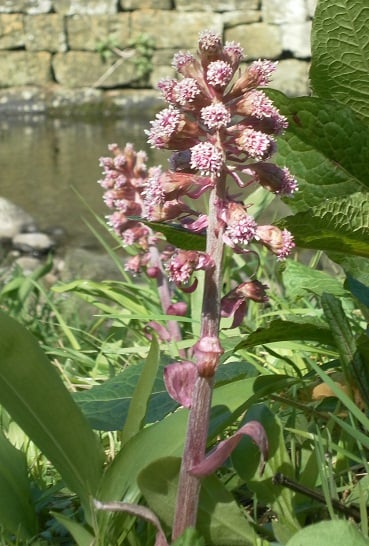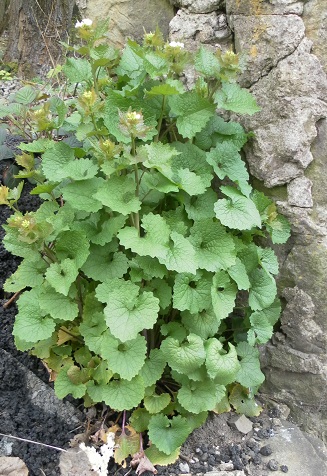Spring in England: Spring Flowers
The English countryside's wild flowers epitomise spring for me and with spring firmly on the way in, it seemed an apt moment to share the spring wild flowers of Burnley, which up to now I have been enjoying alone. Whether it is sunny or one of Lancashire's well known damp rainy days, it's worth getting out there to feast your eyes on the wildflowers that spring brings.
Whilst I think Lancashire has an especially good display of spring flowers, I am a little biased from living here. So where-ever you live in England or where-ever you are planning to visit here whilst you stay on holiday, take an hour out of your week to get out in the countryside and look for some of these spring flowers.
I wouldn't want to be without Collin's wild flower guide

Don't feel you have to wait for spring to enjoy England's wild flowers. There are plenty flowering at other times of the year. You might also fancy taking a look at some fungi whilst you're out and about in the countryside. You never know when you're going to see something beautiful or completely intriguing out on a walk, so keep your eye's peeled for unusual sights too.


Cowslip - Primula veris
Cowslips are a really good egg yellow verging on orange and are one of the cheeriest spring flowers with their multitude of flower heads. Note the orange marks inside the flower.
I used to wonder why they were called cowslips because I didn't think they looked like cow's lips at all. However the name is derived from cow's slop i.e. manure or cow pats - not quite so pretty! This is because they can often be found growing around cowpats in meadows.
This specimen is a slight cheat because it has been actively planted in Barrowford Park about 5 miles from Burnley, so isn't strictly wild. It is a joy to see, none the less.
They are also growing properly wild in Clifton Heights Wood, Burnley and you can see plenty if you take the track from the bottom of Ightenhill Park Lance down to the River Calder.

Butterbur - Petasites hybridus
Butterbur is a strange member of the daisy family. It is hard to recognise as a daisy at all!
Like coltsfoot, the flowers appear before the leaves. The leaves are large and heart shaped with a greyish underside. It is a plant which loves a damp place and I have found it most often beside streams.
This one was photographed beside Pendle Water (stream) where it runs through Barrowford Park, about 5 miles from Burnley.

Marsh Marigold - Caltha palustris
The marsh marigold flower looks like a big buttercup, but the leaves are different, being solid rather then frondy and it is an altogether bigger plant. Care should be taken when photographing the marsh marigold, because true to its name it does like marshes. This can prove slightly calamitous to the over eager photographer.
These marsh Marigolds were photographed in Castle Clough Wood which is about five miles away from Burnley, near Huncoat. They can also be found in meadows near Childers Green, which is on the other side of the road to Castle Clough.

Wood-sorrel - Oxalis acetosella
From above wood-sorrel flowers can look a bit like wood anemones, but crouch at their level and you will see that inside the petals is delicately veined in pink/lilac. The leaves are very different too - the wood-sorrel has clover-like leaves whilst the wood anemone's are frondy.
This photograph was taken in Castle Clough wood. Wood-sorrel can also be found in adjacent Childer's Green wood.

Coltsfoot - Tussilago farfara
Like butterbur's flowers, the coltsfoot flower appear before the leaves and as it favours bare ground it can be rather surprising to see a flower apparently coming from nowhere. It gets its name from the shape of the leaves which are greyish green and somewhat hoof shaped. They're often about the size of a horses hoof too.
The one photographed had taken a hold in a pile of fine gravel beside Crown Point Road, Burnley. The foliage around it is from other plants, as its leaves haven't come up yet.

Wood Anemone - Anemone nemorosa
Wood anemones really make me feel as though spring is taking over from winter. They grow in deciduous woods, but don't like very acid soils. They are an uplifting site when they are growing and flowering in profusion, beating bluebell woods as a 'must see' for me. They can be white, as below, tinged pink or pink. The word anemone is ridiculously difficult to say - try running through it a few times and see if you can get the n and ms round the right way!
I photographed this one beside Pendle Water where it runs through Barrowford. Although it isn't in a wood, it is a remnant of when the area was wooded. There are still some mature trees beside the stream in this area. There are also some in the woodland bordering Sweet Clough (stream) in Burnley.



Jack by the Hedge - Alliaria petiolata
I love the fact that hundreds of years ago people were so familiar with this plant that they gave it a human name - 'Jack' and an address - 'by the hedge'. It is also known as garlic mustard and you will smell the garlic if you tear a little bit of leaf off and crush it between your fingers. It is a tough plant that grows by hedges and roadsides.
This one was photographed beside Marlborough Street in Burnley.
Lesser Celandine - Ranunculus ficaria
The lesser celandine is easy to distinguish from the greater celandine because it is more buttercup like with heart shaped dark green leaves, whereas the greater celandine has a more poppy lie flower and pale green wavy edged leaves.
The lesser celandine shouts spring sunshine at you, gleaming from hedgerows and shady places. I have found them growing in many places around Burnley including the meadows off Lower Rosegrove Lane, where this one was photographed, and Worsthorne churchyard.

Bluebell - Hyacinthoides non-scripta
I've covered the bluebell in one of my other wild flowers in Burnley hubs, but since it's quite possibly illegal to mention British spring wild flowers and leave out the bluebell, I thought I'd include it here too. If you can catch a bluebell wood at just the right week when the bluebells are at their peak, it is a beautiful sight, but a week or two earlier or later you might be a little disappointed that the display isn't all it's talked up to be.
I photographed these bluebells on a rainy day in Hagg Wood, Burnley (an odd name for a very lovely wood).

Primrose
In the UK the primrose vies with the bluebell for the accolade of iconic flower of spring. Could I pick a favourite of the two? Honestly no - I'd have to say whichever one I was looking at at the moment and hope that I don't see both in the same eyeful. These glorious primroses are in Clifton Heights - a snippet of wood boundaried by the motorway, a railway line and surrounded by Burnley town, all of which fade into the background as you gaze at the primrosey loveliness.
The primrose is quite a promiscuous plant and will hybridise with both the cowslip and oxslip producing variable plants with characteristics from each parent.


When and Where to See Spring Wild Flowers in Burnley
Species
| Preferred Habitat
| Flowering Time
| Where Found in Burnley
|
|---|---|---|---|
Bluebell
| Deciduous woodland
| Apr-Jun
| Sweet Clough Wood, Burnley, Castle Clough Wood near Huncoat, Hagg Wood, Burnley
|
Butterbur
| Ditches, damp meadows, waterside
| Mar-May
| Pendle Water running through Barrowford, Sweet Clough, Burnley
|
Coltsfoot
| bare ground
| Feb-Apr
| Crown Point Road, Burnley
|
Cowslip
| Meadows and woods
| Apr-May
| Barrowford Park, near Burnley, Clifton Heights Wood, Burnley
|
Jack by the hedge, garlic mustard
| Hedgerows and roadside
| Apr-Aug
| Marlborough Road, Stoops Estate
|
Lesser Celendine
| woods, hedgerows, damp shade
| Feb-May
| Meadows off Lower Rosegrove Lane, Worsthorne churchyard
|
Marsh Marigold
| Marshes, damp grassland, pond edges
| Mar-June
| Meadow adjacent to Childers Green, Castle Clough near Huncoat, Hagg Wood, Burnley
|
Primrose
| Deciduous woods
| Mar-Apr
| Clifton Heights Wood, Burnley Ightenhill Park Rd, Burnley
|
Wood anemone
| Deciduous woods
| Mar-May
| Pendle Water running through Barrowford and can be seen from the footpath beside Ormerod Wood near Hurstwood, Sweet Clough, Burnley, Hagg Wood, Burnley
|
Wood-sorrel
| Deciduous woods
| Apr-May
| Castle Clough and Childers Green near Huncoat, Hagg Wood, Burnley
|
Flowering season of English Spring Wildflowers






